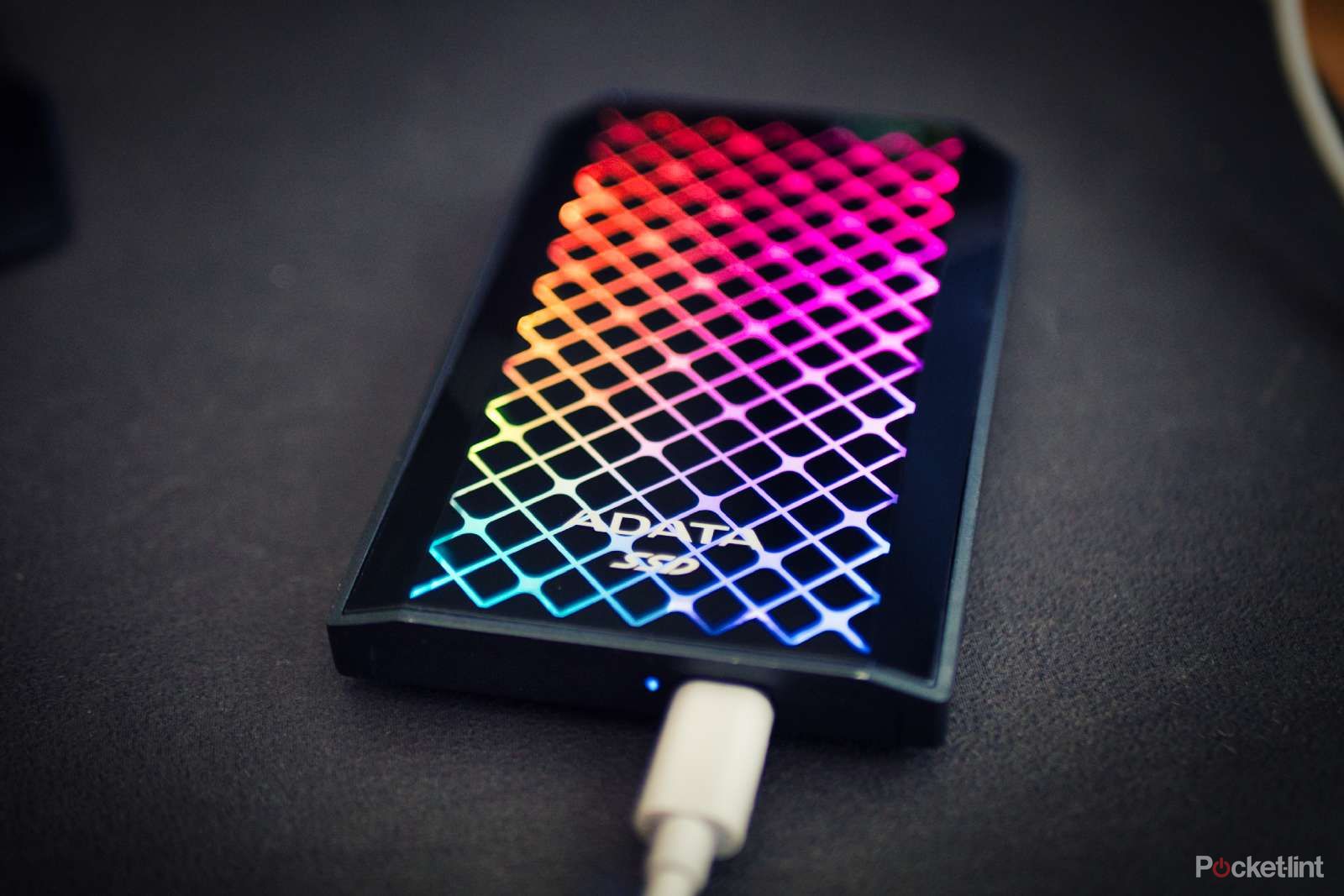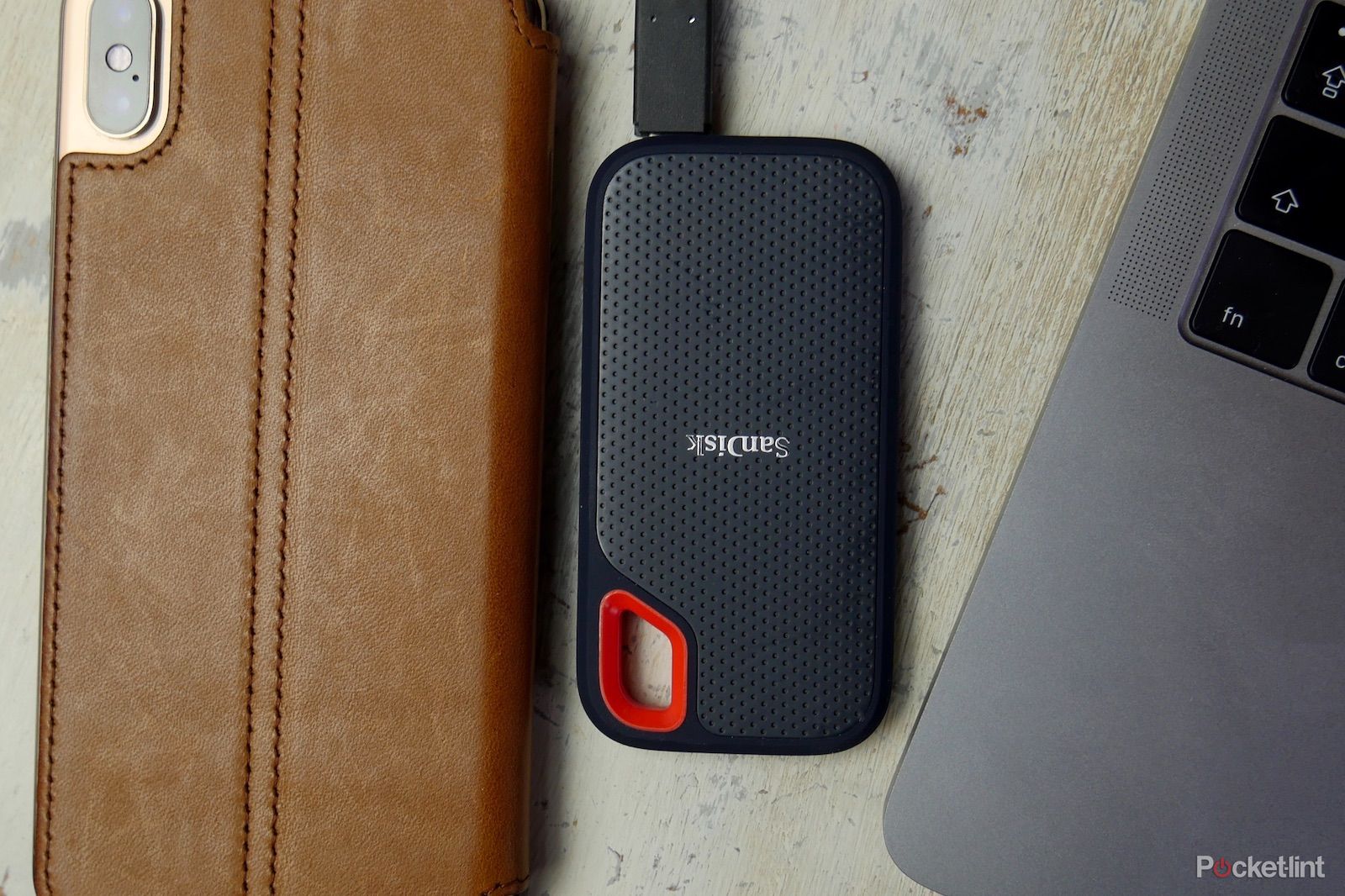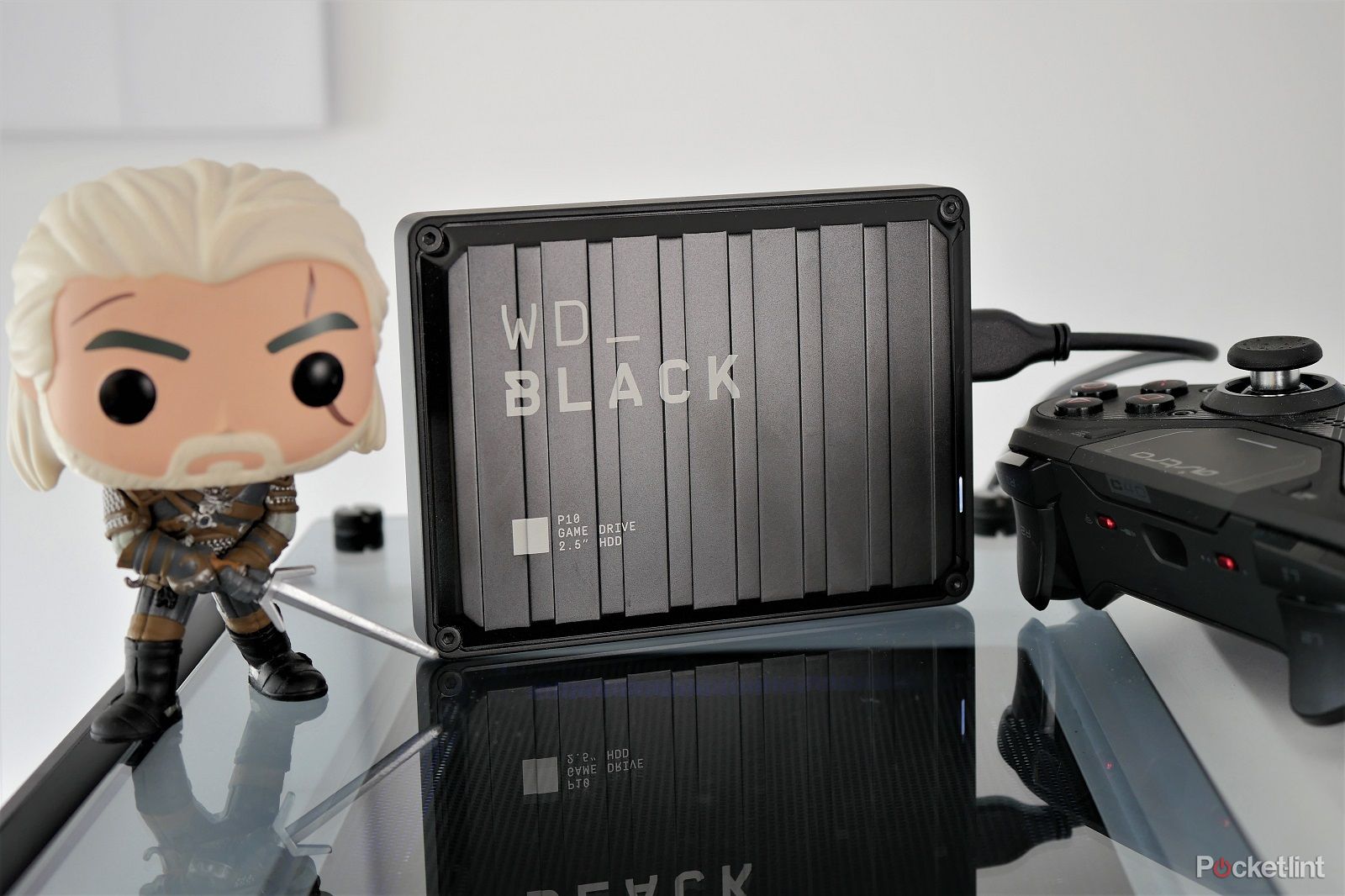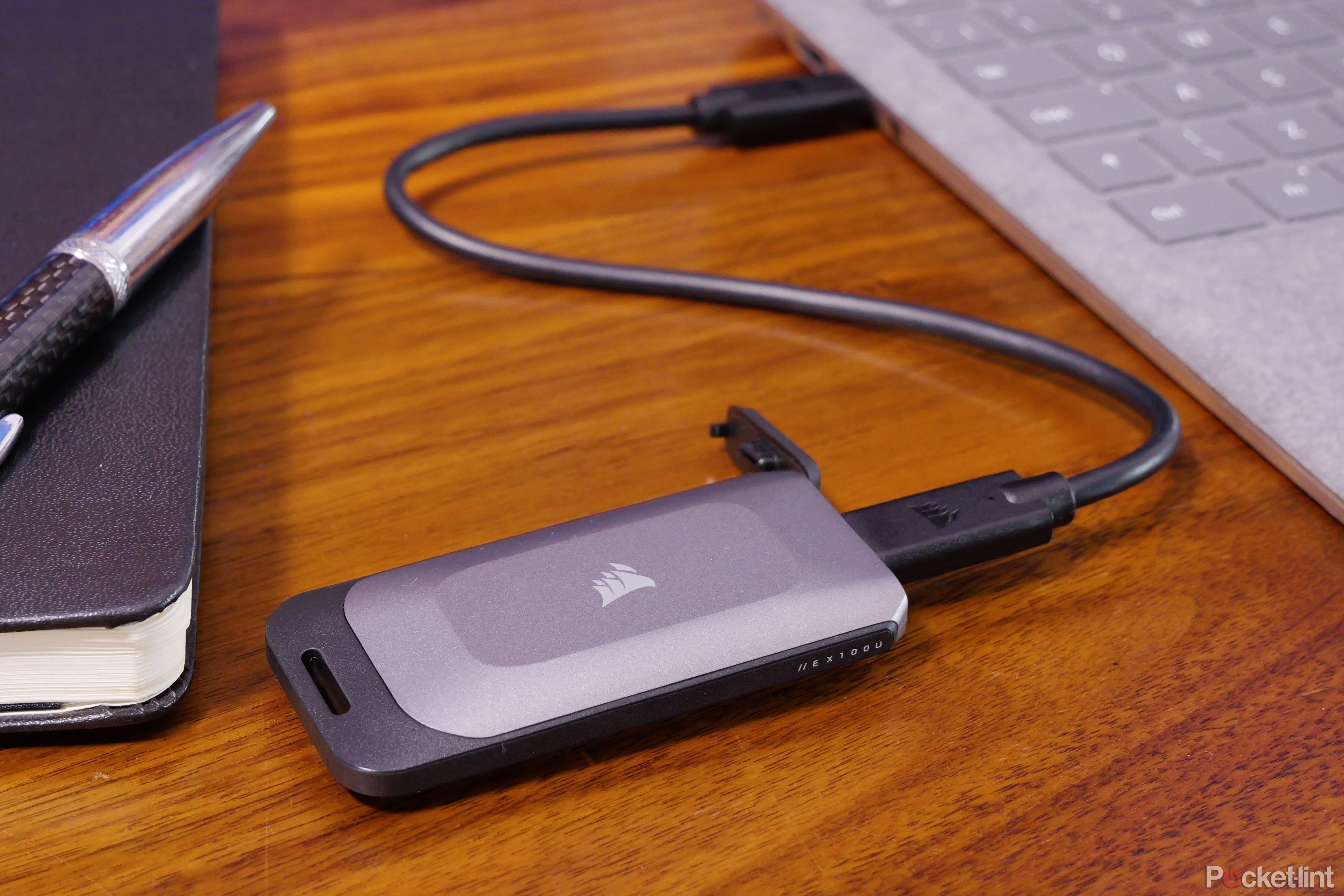Though laptops and other electronics often have the option of high-capacity flash memory, an external drive is still the most affordable and portable form of additional storage for most people.
With plenty of different uses for an SSD, however, picking the right option for your needs is easier said than done. Thankfully for you, that’s where this guide comes in.
We’ve put some of the top drives through their paces in a variety of scenarios, including gaming, intensive video editing and productivity tasks, all in order to help you find out.
For those new to the world of external hard drives, we’ve also included some advice on what to consider before buying one.
Our Top Pick: Best SSD
Samsung T7 Shield
1. Best overall
The Samsung T7 Shield seemingly has it all. Speed, security, ruggedness and plenty of storage space. It’s simply one of the best SSDs money can buy.
- Best-in-class reliability
- Rugged IP65 housing
- Impressive performance
Samsung has updated its top-performing external SSD with a new rugged housing and even more impressive performance. The Shield forgoes the fingerprint scanner of the T7 Touch and instead opts for the utmost in reliability thanks to a drop-resistant, IP65-certified, rubberised shell.
For most people, durability is of greater concern than security, so we think the Shield might just be the most popular version yet. However, if you need top-notch security, fear not. The T7 Shield benefits from the same industry-leading AES 256-bit hardware encryption as the T7 Touch, you’ll just need to type a password instead of scanning a finger.
When it comes to performance, the T7 Shield leaves little to be desired, with 1000 MB/s writes and 1050 MB/s reads via USB 3.2 Gen 2. What’s more, Samsung has improved sustained performance, so you’ll be able to experience that maximum speed for longer transfers.

ADATA SE900G
2. Best for speed
A flashy RGB drive with equally impressive performance. A great option for anyone, so long as they’re on board with the styling.
- Blazing fast
- Reasonably priced
- Flashy looks
- RGB lighting can’t be turned off
This flashy drive from ADATA knows how to stand out, the entire top panel has an RGB illuminated lattice that’s sure to draw attention. Perfect for pairing with a gaming setup, but equally suited to the eccentric.
You’ll have to be a fan of the lighting, though, as there’s no way to turn it off. So if it’s not your kind of thing, you’ll want to look elsewhere.
Aside from the flashiness, the SE900G is a blazing fast portable SSD that touts speeds up to 2000MB/s when used with a compatible USB 3.2 Gen2x2 port.
There’s support for a huge variety of devices including PC, Mac, Android, PS5 and Xbox. The pricing is competitive too.
We think it’s a great option for anyone, so long as you’re into the styling.

SanDisk Extreme Portable SSD
3. Best for travelling
A solid performer from a trusted brand, this Sandisk pick provides rugged reliability for those who need it on the road.
- Rugged design
- Well priced
- Can be clipped onto keys or a bag
Testing the transfer speeds from our MacBook Pro desktop to the Sandisk Extreme Portable SSD, we got virtually identical results to the Samsung T7. The same 9.3GB collection of files were transferred in 20.66 seconds, and the discrepancy was easily ignorable, and probably explained by the pace of human reaction, rather than the speed of the transfer itself.
So, performance is essentially as good, but there’s one real reason you might want this over the Samsung: design. Not only is the Sandisk (somehow) considerably smaller and lighter than the T7, but it’s also got some water and dust resistance.
You can’t submerge it, but it’ll survive the odd accidental splash. As a bonus, it also has a handy little cutout in the corner to feed a carabiner through so you can attach it to your keys or bag.

WD_Black P10
4. Best for big storage
The WD_Black P10 is a perfect balance of speed, space and price that’s a wonderfully easy way to up your storage game with minimal fuss.
- Bags of storage
- Unique styling
- Console compatible
- Not as rugged as it looks
The WD_Black P10 is one of several variants of external HDDs Western Digitial has designed specifically for gamers. This drive comes with a robust, snazzy-looking housing that includes an aluminium top for passive cooling goodness.
An external drive like this is a brilliantly simple way to upgrade your storage space for more games without messing about with internals. When compared with an SSD, the P10 is pretty slow, but it offers brilliant value for money. If you need a lot of storage then the 5TB option is one of the better deals around when the SSD equivalent would run you into four-figure territory.
WD also has SSD and desktop variants of the WD_Black external drives, so, if you like the looks but need more speed or more storage, you can get it in a similar chassis.

Corsair EX100U portable SSD
5. Best for size
Don’t overlook this tiny SSD. It’s fast, portable and capable too. We found it reliable and useful as well as surprisingly nippy.
- Tiny and portable
- Storage options up to 4TB
- Fast USB 3.2 Gen2x2 interface
- Up to 1600MB/s read speed
- So small you might lose it
The Corsair EX100U is a compact little drive which is able to deliver nifty speeds and solid storage in a tiny form factor.
This is a brilliant SSD that runs with up to 1600MB/s read speeds with a USB-C connection. It’s slim and small, so easily portable and yet is available in up to 4TB storage sizes.
We found it perfect for transferring video files, backing up games and more.
It’s small enough to slip into your pocket and take with you if you need to leave the house, just be careful not to lose it.
How to choose a portable external drive
Finding the right external drive for your needs can be a tricky task, especially if you’re not familiar with the terms used in storage products.
To help you figure it out, we’ve put together some things to think about and explained some of the more common terms used. Have a read of these, and you’ll be well on your way to finding your ideal portable storage.
SSD vs HDD
If you want to get into the details, we have a full guide on this topic that can be found here. In short, SSDs are better than HDDs in every way except one – and that’s the price.
If you need very high-capacity storage, like above 2TB, then SSDs become extremely cost-prohibitive. Whereas you can find HDDs up to around 5TB for less than £100/$100.
In an ideal world, we’d be using SSDs for everything. They’re way faster, smaller, more robust and use less power to operate, which is handy on the go.
The good news is that SSDs up to 1TB in capacity are more affordable than ever before, so if you don’t need mountains of storage, SSD is definitely the way to go.
What is NVMe?
You may see portable SSDs described as having NVMe storage, this is currently one of the fastest types of SSD available. We won’t get bogged down in how it works or why it’s faster, all you really need to know is that it’s fast.
Having an NVMe SSD won’t affect compatibility, durability or anything else. It’s just a faster and more modern style of SSD.
The different types of USB connection
This is where things start to get a little confusing, there’s a variety of USB standards that offer varying levels of speed. Modern drives mostly rely on a USB type C connector but this only describes the shape of the connector and the actual speed can range anywhere up to 40 Gbps.
USB 3.2 is the most common with current drives, but USB 4.0 is starting to appear more frequently, too. Unfortunately, the naming of these classifications isn’t the most intuitive but here’s how it breaks down:
- USB 2.0 – 480Mbps
- USB 3.2 Gen 1- 5 Gbps (SuperSpeed)
- USB 3.2 Gen 2 – 10 Gbps (SuperSpeed+)
- USB 3.2 Gen 2×2 – 20 Gbps (SuperSpeed 20Gbps)
- USB 4.0 Gen 2×2 – 20 Gbps
- USB 4.0 Gen 3×2 – 40Gbps
Luckily, USB 3.2 is backwards compatible so even if you don’t have the latest and greatest device to connect to, you will still be able to transfer your files, albeit at a slower pace.
If you want to make sure that you can benefit from the full speed of your external drive, you will need to check the specifications to see which type of USB port it has.
How is your portable drive going to be used?
This is really what things come down to when choosing a portable external drive, as different options are geared toward different users.
If you’re a nature photographer who needs to back up files out in the field, then ruggedness and water resistance will be high on your priorities.
If you’re a gamer looking to boost console storage, you’ll want to focus on the speed of the drive so that you don’t have to spend all day sitting in loading screens.
Think about how you’re planning to use the drive and the important features should jump out at you.
Trending Products

Cooler Master MasterBox Q300L Micro-ATX Tower with Magnetic Design Dust Filter, Transparent Acrylic Side Panel…

ASUS TUF Gaming GT301 ZAKU II Edition ATX mid-Tower Compact case with Tempered Glass Side Panel, Honeycomb Front Panel…

ASUS TUF Gaming GT501 Mid-Tower Computer Case for up to EATX Motherboards with USB 3.0 Front Panel Cases GT501/GRY/WITH…

be quiet! Pure Base 500DX Black, Mid Tower ATX case, ARGB, 3 pre-installed Pure Wings 2, BGW37, tempered glass window

ASUS ROG Strix Helios GX601 White Edition RGB Mid-Tower Computer Case for ATX/EATX Motherboards with tempered glass…










